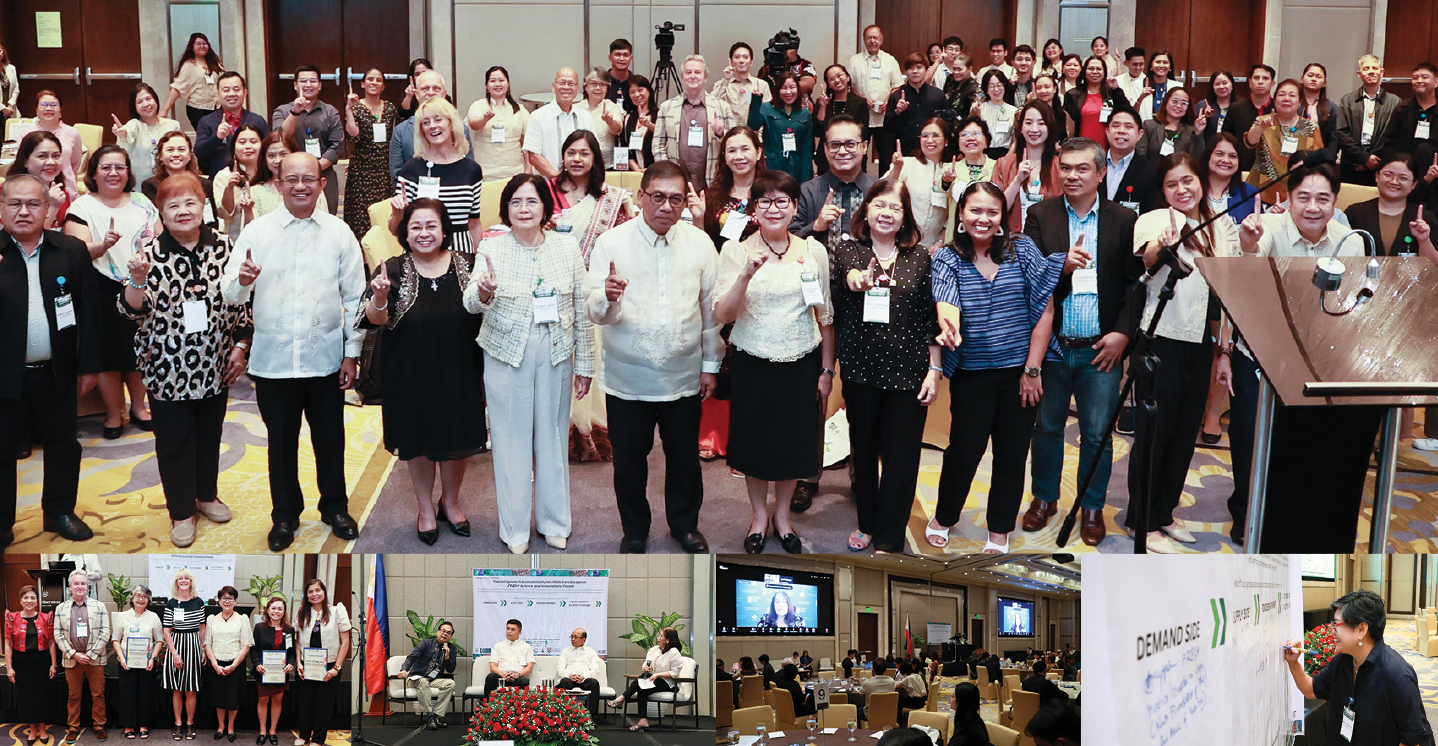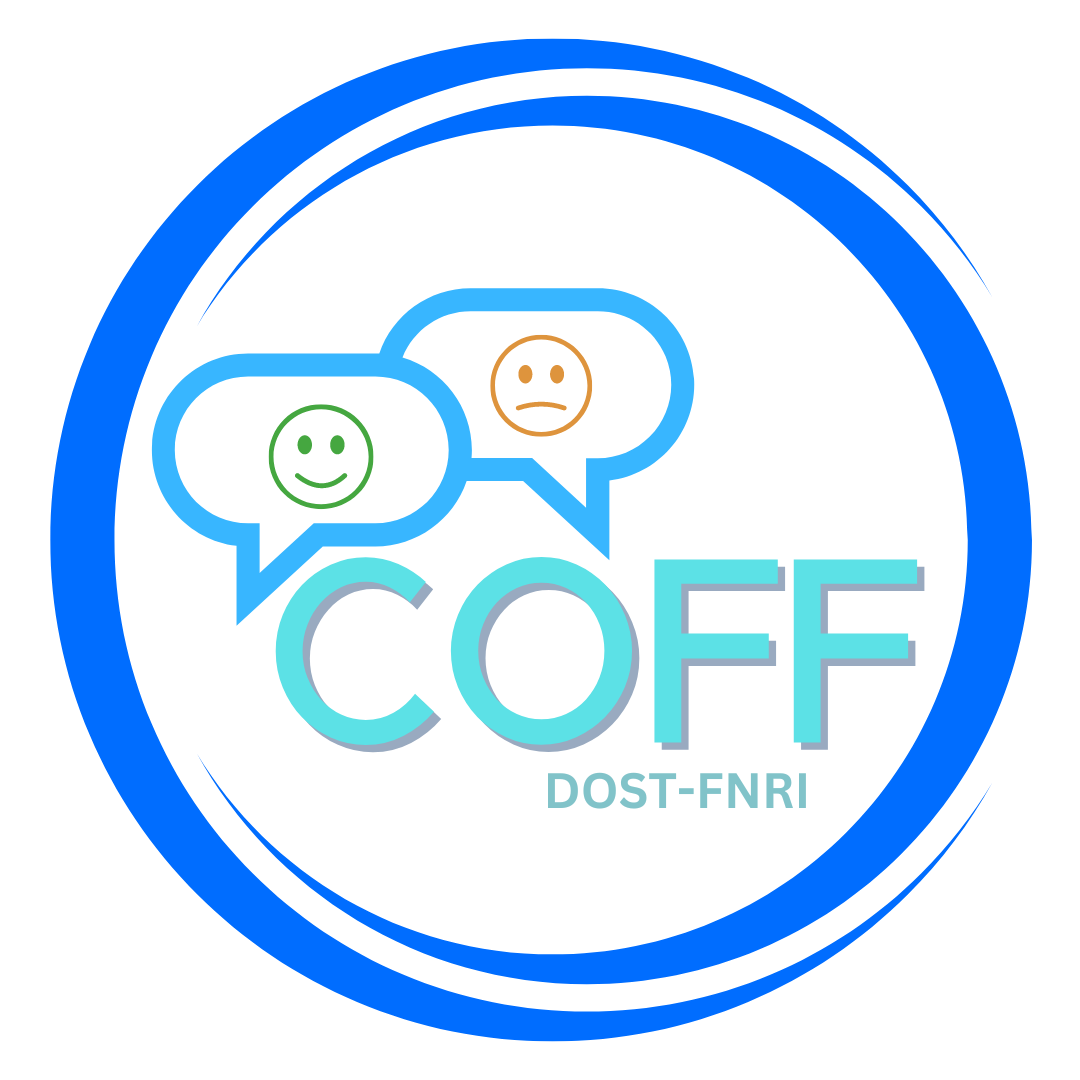 Representatives from different government agencies, international organizations, non-government organizations, academe and the private sector expressed commitment to make fruits and vegetables available, accessible and affordable during the Fruits and Vegetables for Sustainable Healthy Diets (FRESH) Science and Innovations Forum held on July 17, 2024 at the Sheraton Hotel Manila, Pasay City.
Representatives from different government agencies, international organizations, non-government organizations, academe and the private sector expressed commitment to make fruits and vegetables available, accessible and affordable during the Fruits and Vegetables for Sustainable Healthy Diets (FRESH) Science and Innovations Forum held on July 17, 2024 at the Sheraton Hotel Manila, Pasay City.
“Fresh fruits and vegetables are the cornerstone of a sustainable diet due to their minimal environmental footprint,” Imelda Angeles-Agdeppa, Ph.D., country coordinator of FRESH, highlighted in her presentation. The FRESH Initiative is an end-to-end approach to ensure safe, affordable and healthy diets among Filipinos. Key findings and recommendations from the different work packages of the FRESH research network with different distinguished institutions in the Philippines as leads were presented. On the one end, results of the consumer behavior including consumption presented by Eva A. Goyena, Ph.D., Senior Science Research Specialist of the DOST-FNRI highlighted in her report the inadequate intake of micronutrients among different age groups, particularly vitamin C, vitamin A, calcium, iron, zinc and folate as the most limiting micronutrients in the diet of Filipinos. Moreover, plant-source foods that include fruits, green and yellow vegetables and other vegetables contribute only less than 5 percent to total intake across age groups. Among the barriers to fruit and vegetable intake identified were low preference to fruits and vegetables and high preference for sweets, fast foods and convenience foods at the individual level. Meanwhile, high prices, limited food budget, socio-economic and cultural perception of fruits and vegetables (F&Vs), as well as insufficient knowledge, skills and time to prepare fruits and vegetables and improper storage were identified at the household level. For food environment key findings presented by Neha Kumar, Ph.D. of the International Food Policy Research Institute (IFPRI), it was emphasized the need to develop policies that help institutionalize integrated school-based interventions and strengthen collaboration within Department of Education and other agencies for more holistic implementation of interventions and provide supplementary inputs for school programs. On the supply side, conservation of fruits and vegetables biodiversity as reported by Danny Hunter, Ph.D., Principal Scientist of The Alliance of Bioversity International and the International Center for Tropical Agriculture (CIAT) in partnership with the International Institute of Rural Reconstruction (IIRR), the neglected and underutilized are given importance for improvement and diversification. Germplasm of 22 indigenous vegetables (IVs) have been prioritized for conservation, school crop museums are being established and IVs seed packs and seedlings have been distributed in participating schools, vegetable growers, and community gardens. They have also collaborated with Consultative Group on International Agricultural Research (CGIAR) Resilient Cities Initiative in the distribution of indigenous fruit seedlings and recommends incorporating these indigenous F&Vs in food-based dietary guidelines. Piloting and scaling of safe and sustainable Good Agricultural Practices (GAP) for vegetable production which include integrated pest management and integrated nutrient management under the lead of Prof. Filomena C. Sta.Cruz, Ph.D. of the University of the Philippines Los Baños (UPLB) were done for eggplant, bitter gourd, and yardlong beans. Crop productivity and profitability were shown to be higher with GAP compared to the usual farmer’s practice. For the post-harvest and inclusive markets with lead Jenny Ekman, Ph.D. of the Applied Horticulture Research in Australia, in partnership with the UPLB and UP Mindanao, the value chain mapping and implementing different methods to extend shelf-life of mangoes, indigenous vegetables and fruits like kamote, saluyot, pako, kangkong, watercress, mangosteen, and bottle gourd and improved handling for mangoes and tomatoes have been tested and shown effectiveness. Lastly, in terms of policies, presented by Elaine Borazon, Ph.D. of the National Sun Yat-sen University in Taiwan, developing industry roadmaps to identify priority crops and required resources, protecting agricultural land to support fruits and vegetables, reducing production costs through incentives and subsidies, aligning policy directions, addressing lack of facilities for storage, identifying needs per crop, equipping farmers with business and marketing skills, and ensuring that local production meets domestic demand were among the proposed solutions. DOST Secretary Renato U. Solidum, Jr. expressed that the Department is one with the FRESH team on the quest towards sustainable fruit and vegetable production and consumption. He is glad that the initiatives are aligned with the DOST’s and current administration’s priority agenda on nutrition, health and food security, poverty reduction, livelihoods, gender equality and youth inclusion, climate adaptation and mitigation, environment and biodiversity. Other insights, reflections, challenges and ways forward to make sustainable fruit and vegetable production and consumption work in the country from key officials in agriculture, social work, health and academe were shared in the series of panel discussions during the forum.











